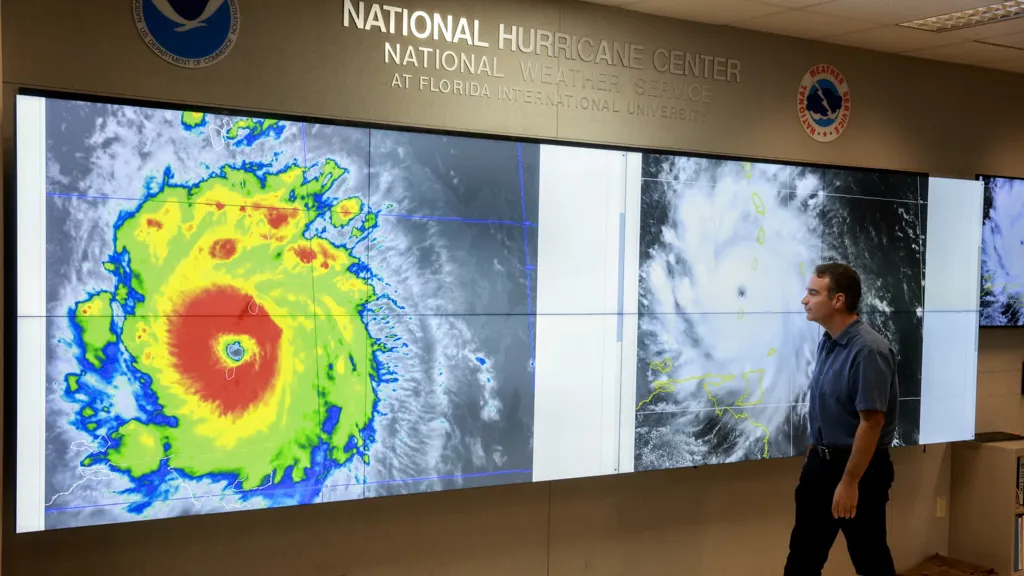Residents talk to a motorist on a street littered with storm debris from Hurricane Helene and Hurricane Milton in the aftermath of Hurricane Milton on October 10, 2024 in Venice, Florida.
Despite those losses, the U.S. property casualty insurance industry saw its best underwriting performance since 2013, according to a report from the Insurance Information Institute and Milliman.
But the report concludes that January's devastating wildfires in California and economic challenges related to tariffs could dampen the industry's results in 2025.
Insurers and reinsurers are collectively facing more than $50 billion in losses from the Los Angeles wildfires.
The Midwest has also suffered outbreaks of severe thunderstorms with damaging hail, wind and tornadoes this spring. The Storm Prediction Center had tallied 883 local tornado reports this year as of Monday, 35% higher than average for this time of year.
Aon said the severe convective storms have caused an estimated $10 billion in insured losses in the first quarter. A storm over three days in May added another estimated $7 billion to insurers' tally.
The last 10 years have averaged more than $33 billion annually in insured losses, a 90% increase from the previous decade.
It's an existential threat to the insurance industry and its ability to provide affordable insurance to homeowners, according to Bill Clark CEO of Demex, a reinsurance analytics group. And the problem is getting worse, not better.
"Reinsurance (insurance for insurance) costs for severe convective storm losses are at a 20-year high and, coupled with limited availability, it is leaving insurers hamstrung and unable to transfer most of their mounting losses," Clark said in an email to CNBC.
Whether hurricanes, wildfires or severe storms. Aon blames the skyrocketing losses on growing exposure, meaning more people are living where climate risks are higher and the cost of their homes, cars and all the stuff inside is more expensive.
The insurance industry is working to push state and local efforts to build resiliency and improve mitigation efforts -- meaning better building codes, public works projects that protect homes and properties, and tough standards on defensible spaces around buildings, for instance.
The president of Jefferson County Parish, Cynthia Lee Sheng, pointed to all the efforts made in the 20 years since Hurricane Katrina hit Louisiana, killing 1,392 people in 2005. The government overhauled levees, flood walls, and pumping stations.
"It's estimated that $13 is saved for every $1 spent on mitigation efforts," Sheng said. "Hurricane Katrina also changed the face of disaster recovery. Key agencies have learned to work together to provide assistance, coordinate efforts and ensure efficient response."
